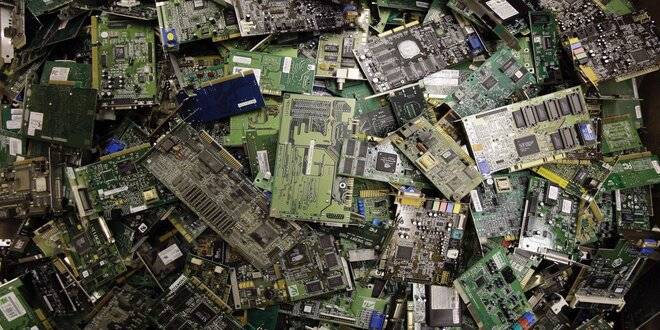There is no secret about the fact that digital currency mining has huge carbon footprints. The process needs troops of computers that are always hungry for electricity and that operate round the clock in order to unlock new coins by solving complex mathematical problems. Because these problems become complex with each passing day, there is a huge amount of energy wasted during this process. The Bitcoin mining electronic waste or Bitcoin mining e-waste of every two transactions is the same as throwing away an iPad.
With Bitcoin mining, any downtime makes the next coin more complex and harder and the only way to attain an edge over the competitors is to operate more computers. And as there is an increase in the prices of Bitcoin, more emission takes place.
Bitcoin Mining Waste Increases Each Day
The process of mining also pressurizes the Bitcoin miners to operate only the fastest and the latest, and the most energy efficient computer chips and throw out the old ones. That leads to a complete mountain of the electronic waste as per a report that was published on September 16 in the Resources, Conservation, and Recycling journal. The approximate lifespan of a BTC mining chip is just 1.3 years as per a report. But if you wonder is Bitcoin mining profitable, then the answer is yes, very much. And probably for that reason so many users are restoring to mining for Bitcoin. With every level of difficulty, miners win a higher amount of money.
Each year the production of Bitcoin mining waste is nearly 30,700 tonnes which are generally in the form of e-waste. Miners earn money by formulating new BTCs but as stated before, the computer that is used consumes a huge amount of power. There is Bitcoin mining software as well that is used to do mining. Along with that when the computer that is used for Bitcoin mining becomes obsolete, it also produces a good amount of Bitcoin mining electronic waste.
As a result, the proportion of e-waste that is generated can be compared to the “small telecommunication and IT equipment” waste of the nation. So if you have any queries on how Bitcoin is generated, it is generated through the process of Bitcoin mining.
Conclusion: What Can Be Done?
E-waste or what is known as the electronic waste is the fastest evolving waste stream in the world which increased by 21% between 2014 and 2019 to 53.6 million metric tons as per a report from the United Nations. Less than ⅕ of that e-waste can be recycled and many of the chemicals and the metals that are there in the e–waste are harmful to humans. And the Bitcoin Electronic Mining Waste are a great contributor to this increasing number of e-waste.
The solution to the electronic waste footprints of Bitcoin is similar to that of the carbon footprints which is a new approach to mining that is not dependent on the concept of Bigger is better. Ethereum which is Bitcoin’s biggest competition presently is at the apex of the changeover to a new method of mining known as the PoS (Proof of Stake) which is way more energy efficient than the PoW (Proof of Work) that Bitcoin uses.
- The Best Shared Hosting Services For This Year - 30/10/2023
- 10 Best Dedicated Hosting Services To Try Out Now! - 27/10/2023
- Bitcoin Mining Industry: How Will BTC Mining Companies Survive? - 12/01/2023
 Crypto Venture News One stop Crypto Track Down
Crypto Venture News One stop Crypto Track Down 






